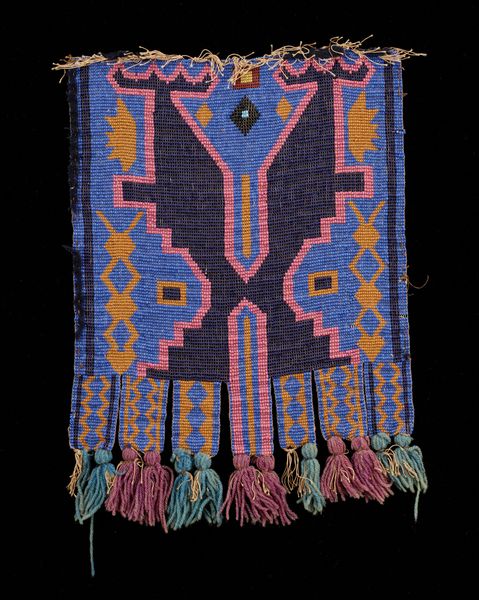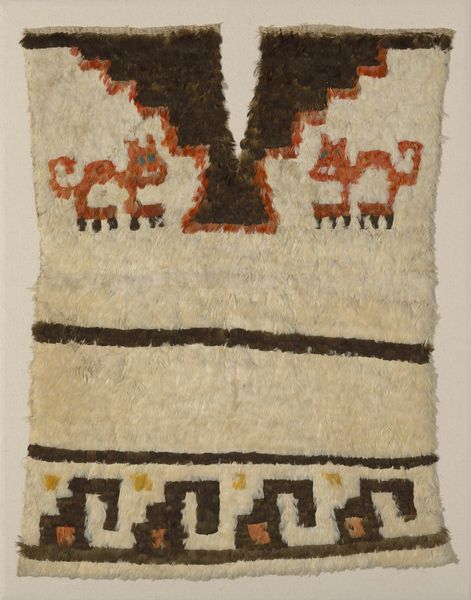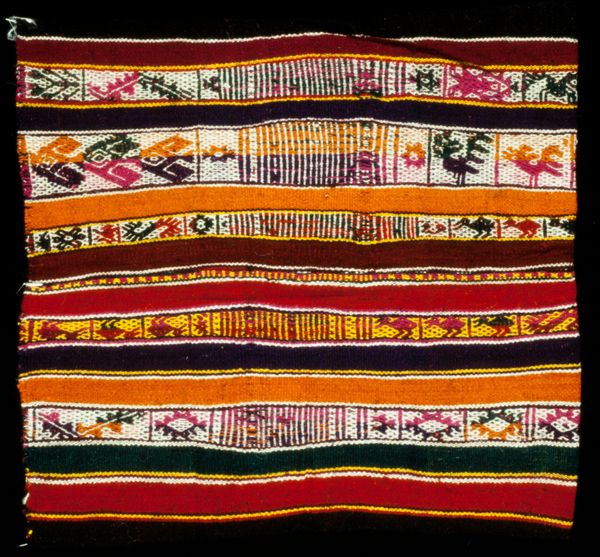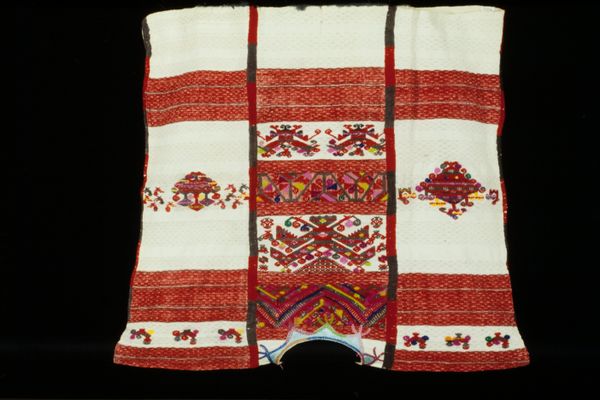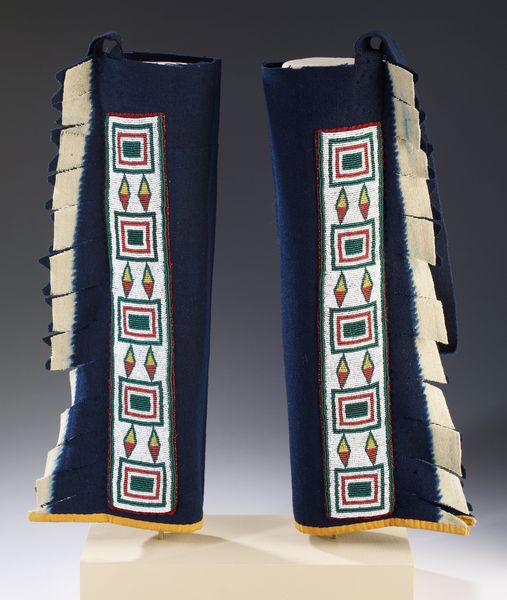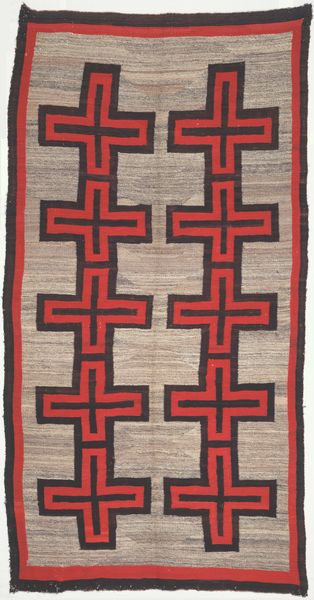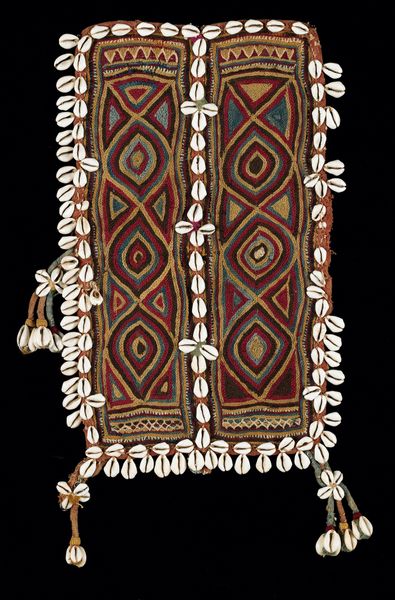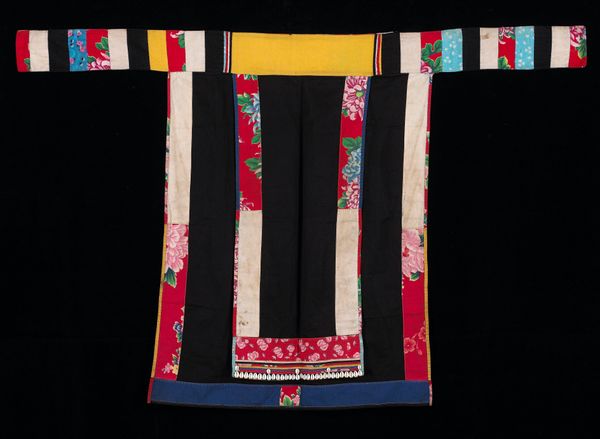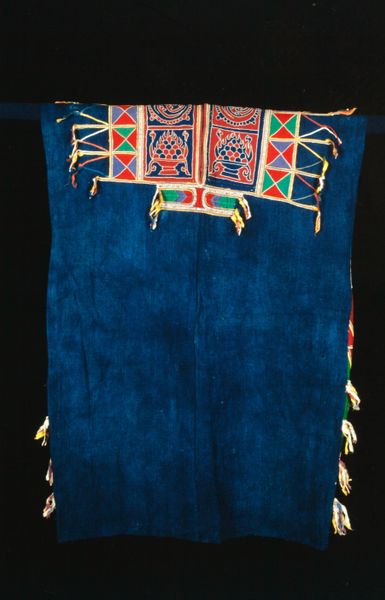
fibre-art, textile
#
pattern heavy
#
natural stone pattern
#
fibre-art
#
textile
#
collage layering style
#
fashion and textile design
#
geometric
#
repetition of pattern
#
pattern repetition
#
textile design
#
beaded
#
decorative-art
#
layered pattern
#
decorative art
#
indigenous-americas
Dimensions: 27 x 20 1/4 in. (68.58 x 51.44 cm)
Copyright: Public Domain
This Beaded Apron, also known as a Jocolo, was painstakingly crafted with beads by an anonymous artist. Look closely, and you can see how each tiny bead is individually placed, building up the design gradually. It speaks to a process of making that is slow, thoughtful, and deeply connected to the materials. The palette is restrained, mostly white with accents of green, brown, red, and blue. This simplicity allows the geometric shapes and patterns to really stand out. Imagine running your hand across its surface, feeling the texture of the beads. See how a particular green horizontal line, when looked at more closely, transforms into individual marks, an almost organic contrast to the hard edges of the geometric shapes. This apron reminds me of the work of contemporary artists like Jeffrey Gibson, who also use beadwork in ways that bridge tradition and modernity. The beauty of art lies in these conversations across time, in the ways artists borrow, transform, and reimagine. There’s no single right way to see it, just different ways of connecting.
Comments
minneapolisinstituteofart almost 2 years ago
⋮
Throughout their lives, Southern African Ndebele women wear various aprons that mark stages of social advancement. Pre-adolescent girls wear an apron of one solid piece, called a "ghabi"; when they reach adolescence, they start wearing a "pepitu", recognizable by its simple embellishment and lack of flaps. After marriage, a woman wears more elaborately adorned aprons: the "mapoto", for everyday use, has two square flaps; the "jocolo", with five rounded flaps, is typically reserved for special occasions. The "jocolo" on display here is made with very small glass beads, suggesting it was made between 1900 and 1950. After that time, larger beads—some made of plastic—became more popular.
Join the conversation
Join millions of artists and users on Artera today and experience the ultimate creative platform.
